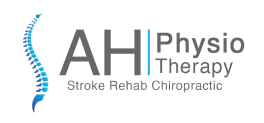Learn Effective Strategies for Lower Back Pain
We’ve all been there – that nagging lower back pain that just doesn’t seem to go away. Whether it’s from a recent injury, long hours of sitting at your desk, or the natural wear and tear that comes with age, lower back pain is something most of us will experience at some point. And if you’ve been dealing with it, you know how much it can affect your everyday life.
At our clinic, we get it. We know how frustrating and exhausting it can be to live with back pain. That’s why we’re here to share some tried-and-true strategies that can help you find relief and get back to feeling like yourself again.
What’s Causing Your Lower Back Pain?
Before we dive into treatment options, let’s take a quick look at what might be causing your lower back pain. There are many potential culprits, including:
- Muscle Strain or Ligament Injury: Overdoing it at the gym or lifting something awkwardly can strain your muscles and ligaments, leading to pain.
- Herniated or Bulging Discs: Your spinal discs are gel like structures which act as cushions, and if one of them bulges or ruptures, it can press on nerves, causing pain and discomfort.
- Poor Posture: If you spend long hours sitting or standing in the wrong position, it can lead to muscle imbalances and back pain.
- Arthritis: Conditions like osteoarthritis can cause inflammation and pain in the spine.
But don’t worry—just because you’re dealing with back pain doesn’t mean it has to stick around forever. With the right approach, you can manage and even eliminate that pain.
How Physiotherapy Can Help You Find Relief
- Personalized Exercises to Strengthen Your Back
When it comes to managing lower back pain, exercise is one of the most effective way to get relief. But not just any exercise—personalized, targeted exercises designed to strengthen your back, improve flexibility, and reduce pain.
- Core Strengthening: A strong core is crucial for stabilizing your spine and supporting your lower back. Simple exercises like planks and bird dogs can make a world of difference.
- Stretching: Tight muscles in your lower back and hips can contribute to pain. Gentle stretches for the hamstrings, hip flexors, and lower back can relieve tension and help you feel better.
- Hands-On Therapy for Immediate Relief
Sometimes, you need a little extra help, and that’s where manual therapy comes in. Our physiotherapists use hands-on techniques to manipulate and mobilize your spine and muscles. This can help:
- Restore Movement: Gentle spinal manipulations can help get your joint glide smoothly, reducing stiffness and increasing the previously limited range of motion.
- Release Tension: Soft tissue mobilization is great for relieving muscle tightness, improving circulation, and promoting healing.
- Posture and Ergonomics: Little Tweaks, Big Impact
How you sit, stand, and move throughout the day can have a huge impact on your back. We often don’t realize how poor posture can lead to pain, but with a few simple changes, you can make a big difference.
- Better Seating: If you spend a lot of time sitting, your chair’s design should support your lower back and encourage good posture.
- Frequent Breaks: If you’re desk-bound for hours at a time, it’s important to stand up, stretch, and move around every so often.
- Lifting with Care: We’ll teach you how to lift weights properly so you don’t strain your back, even when you’re carrying groceries or picking up your kids.
- Heat and Cold Therapy for Quick Relief
Heat and cold packs aren’t just for athletes—they’re great for anyone with back pain. Here’s how each one works:
- Cold Therapy: Ice helps reduce swelling and numb the pain, which can be especially useful right after an injury.
- Heat Therapy: A warm pack can relax your muscles, improve blood flow, and help reduce tightness.
We’ll help you figure out when to use each one for maximum benefit.
- Stress Management and Relaxation
Believe it or not, stress can make your back pain worse. When you’re stressed, your muscles tighten, which can make pain and discomfort more intense. That’s why we emphasize relaxation techniques like deep breathing, meditation, and mindfulness to help manage stress. It’s all about finding balance—physically and mentally.
- Lifestyle Changes for Long-Term Relief
Taking care of your back goes beyond just few sessions occasionally. Start doing small changes in your daily routine can make a big difference in your long-term health:
- Stay Active: Regular movement is key to maintaining a healthy back. Whether it’s walking, swimming, or yoga, keeping your body moving will help keep pain at bay.
- Maintain Proper Weight: Extra weight can put additional strain on your spine, so it’s important to keep a healthy weight to reduce stress on your lower back.
- Body Signals: Don’t push through the pain—if something feels off, take a break and seek help. Call us for more personalized treatment today.

